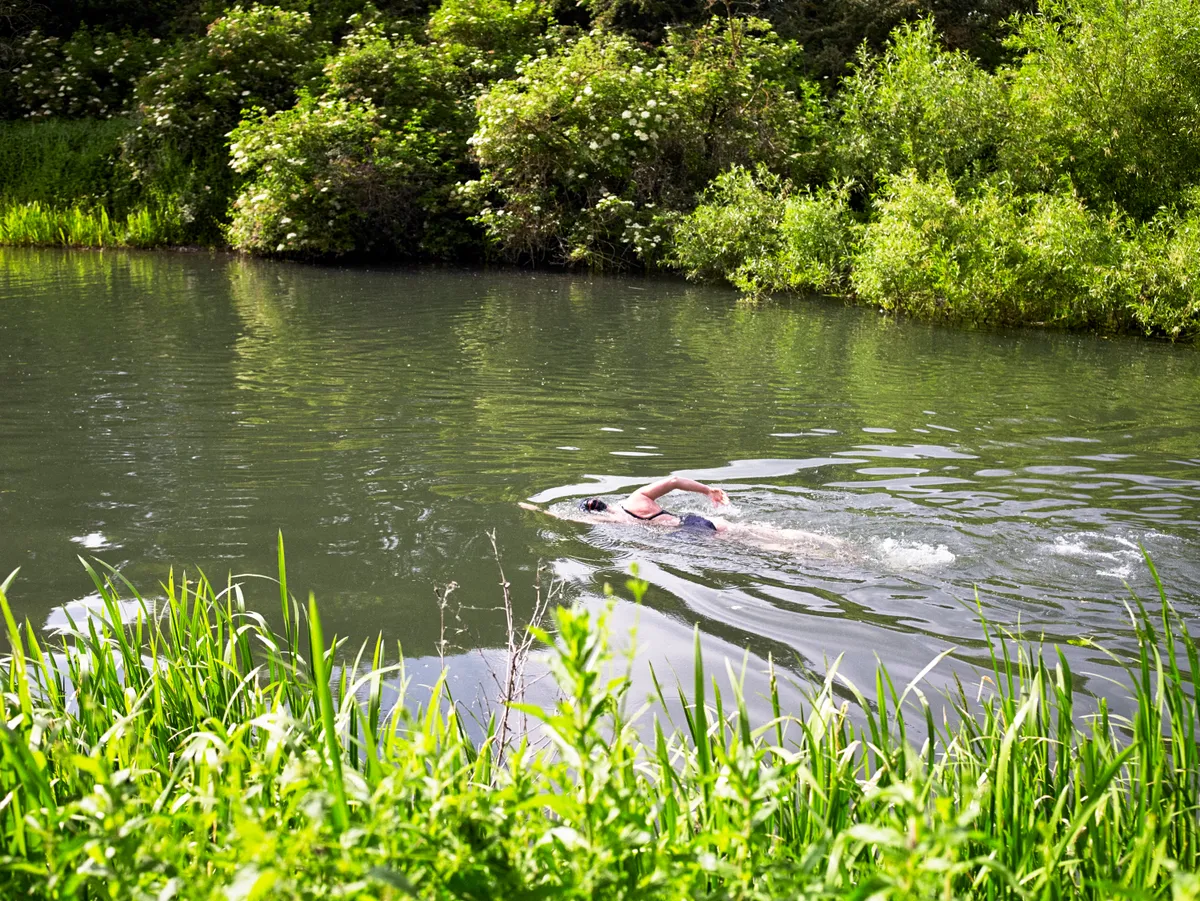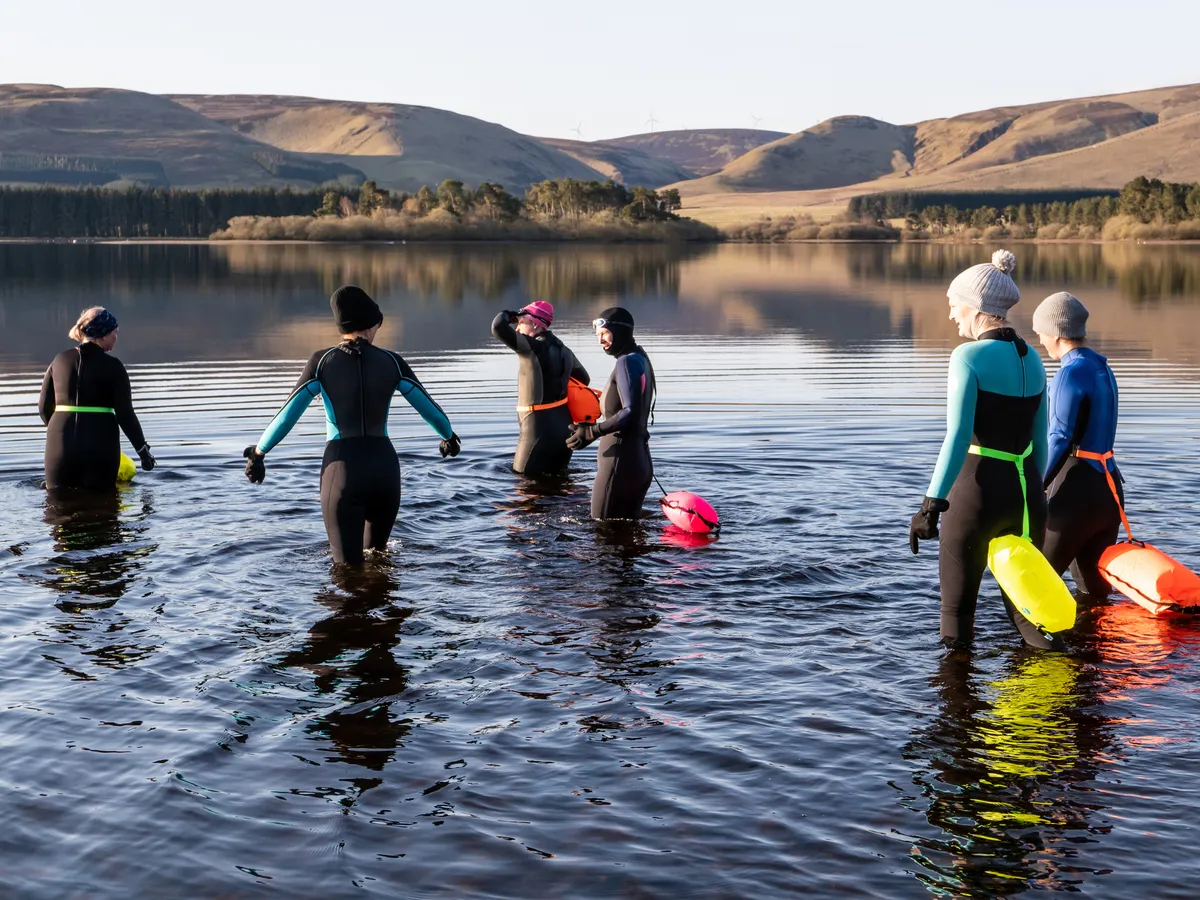Wild – or outdoor – swimming has enjoyed increased popularity in recent years, with more and more people braving the elements and swimming throughout the seasons. If winter swimming sounds a little bracing, then luckily late spring and early summer is a more favourable time to start. The water temperate is still cold at the start of the official outdoor swimming season, but through gradual acclimatisation your body will soon adjust, and you may be surprised by how much warmer the water temperature feels by the end of the summer – and you should find the experience much more comfortable.
From chilly dips in hidden lagoons to epic lakes and rivers and the sea, wild swimming is all the rage in the UK, but how do you get started? Before heading for a wild swim it is important to do some research into water safety.
Here is our essential wild swimming guide, including guidance on water safety and how to get used to swimming in cold water.
What is wild swimming?
Wild swimming is essentially swimming outdoors in natural spaces, such as rivers, lakes or the sea. It has seen a surge in popularity in recent years with more and more people taking to the water on a regular basis.

Is wild swimming safe?
Wild swimming – or swimming in general can be a fun and enjoyable activity. Swimming outdoors is a great way to stay fit and connect with nature but some basic safety precautions must be taken. Each year a number of water-related accidents and deaths could potentially be avoided by following proper safety measures.
More related content:
- Is it safe to swim in a reservoir?
- Best wild swimming spots for seeing wildlife
- Top 7 clean river swims in the UK
© Getty

How to stay safe wild swimming
Open water is usually cold and may be very deep. There can be hazards like shopping trolleys or broken glass in rivers and lakes. Shingle beaches ‘shelve’ quickly, often becoming very deep not far from shore. Riverbanks can be slippery and hard to climb.
These potential hazards don’t mean you should stick to indoor swimming pools, but it’s good to be prepared. Here is our outdoor swimming water safety guide.
1
Check the current
If you discover a river of cool water and you're itching to dive in, check the water's flow first. Throw in a stick or branch – if it floats off faster than you can swim, you won’t be able to beat the current when returning upstream. Avoid.
2
Gauge the depth
Diving or jumping should be carried out with great caution, even if you frequent a particular spot. Rocks, sand, branches and rubbish may have been swept downstream, creating shallow patches and hazards. If you must dive or jump always check the water is obstacle free and gauge the depth first by getting in and checking it out from the water, not from the side.
3
Don’t get too cold
Outdoor swimming spots are often chilly, even in the summer months, so zip yourself up in a wetsuit and work on acclimatising slowly (see our guide to acclimatisation below).

Hypothermia comes on gradually. You may start to feel ‘foggy’ or excessively tired. These are early warning signs. If your teeth start chattering or you’re starting to shiver then get out, dry yourself, put on some dry clothing and do some light exercise to heat your body back up - a walk is enough.
How to acclimatise and avoid cold water shock
Cold water shock can be deadly so even if you’re head to toe in neoprene it’s better not to jump into open water. Instead, ease in and give yourself a few minutes to adjust to the temperature.Cold water triggers an involuntary ‘gasp’ response. You may find you’re breathing more quickly or even feeling panicked. Allow these sensations to subside for a minute or two before actually swimming and splash water on your face before dipping your head under in a few times.You will get used to cold water after just a few swims but build up the amount of time you spend in colder water gradually. On windy days you will lose body heat more quickly.
If you feel very cold, are shivering, or notice your skin is going white or even blue then it is time to get out. Warm up by removing damp swimwear and putting on a dryrobe or towel. Sip a hot drink and try to keep moving by walking on the spot.

4
Have an escape plan
Always know and plan your escape routes, in case you get into trouble or need to get out of the water fast. Remember that riverbanks can be slippery and may be hard to climb so scout out shallow areas that will be easy to scramble out of.
5
Know your algae
Blue-green algae is a slippery and potentially dangerous substance. Avoid if possible. If it's rife, move to a different location. It's most commonly found around lakes in the late summer, and can cause skin rash, irritation to the eyes and sickness if swallowed.
6
Don't swim alone
Avoid swimming alone. A friend will maximise your safety when wild swimming, and as a bonus it’ll make your swim will be more enjoyable. If swimming with a friend isn’t possible then trail a bright tow float behind you on a cord and wear a colourful swim hat – red is the most visible. Although they’re not designed as buoyancy aids and should never be relied on as such, tow floats also give you something to hang onto for a second if you need a rest. Some have waterproof pockets to put valuables in, or storage for water and snacks.

7
Watch out for reeds
Weeds and reeds can be annoying but become dangerous if they are very thick. If you swim into dense reeds, avoid thrashing or fast movements and use your arms to swim away from that area. Pike also like to hide in submerged freshwater vegetation – another reason to avoid them!
8
Cover open wounds
Always cover up nicks and scratches with a good quality water resistant plaster.
9
Don't stray too far from the shore
Cramps are uncomfortable at the best of times, but in water they can be dangerous. Prevention is better than cure, so make sure you’re well hydrated before you get in. Dehydration and excessive strain on muscles can cause cramp, particularly during a long swim – if this does occur swim backstroke back to shore and rehydrate before swimming again.
10
Take care of children
Young children need constant supervision in water and a good quality buoyancy aid is recommended. Lilos should be avoided as they can be blown across open water easily or drift in a current.
How to choose somewhere to go wild swimming
The Outdoor Swimming Society has an interactive wild swim map where you can search for wild swimming spots all over the world and contribute your own secret swimming spots. Or download regional wild swimming apps direct to your iPhone or Android phone.
There are also some great books available which give details of brilliant wild swimming spots.
We like Wild Swim, by Kate Rew; Wild Swimming by Daniel Start; and Wild Swimming: Hidden Beaches, also by Daniel Start. All three books have swim spots listed all over the UK and detailed maps or OS references and directions. Read more about Daniel Start's favourite places to wild swim.
For more regional info try Wild Swimming Walks (Dartmoor and South Devon) by Sophie Pierce and Matt Newbury; and Wild Swimming Walks (London) by Margaret Dickinson.
How to meet other wild swimmers
If you’re stuck for a swimming partner in crime or want to meet other wild swimmers, do a search for wild swimming on Facebook. There are lots of regional wild swimming groups and they often have regular meetups, meaning you don’t have to swim alone.
It really is worth joining the Outdoor Swimming Society too. With 25,000 members it's the biggest wild swimming group in the UK and it's free to join. The OSS hosts several events across the country, including the legendary Dart 10k, and also hosts a national outdoor swim event calendar.
